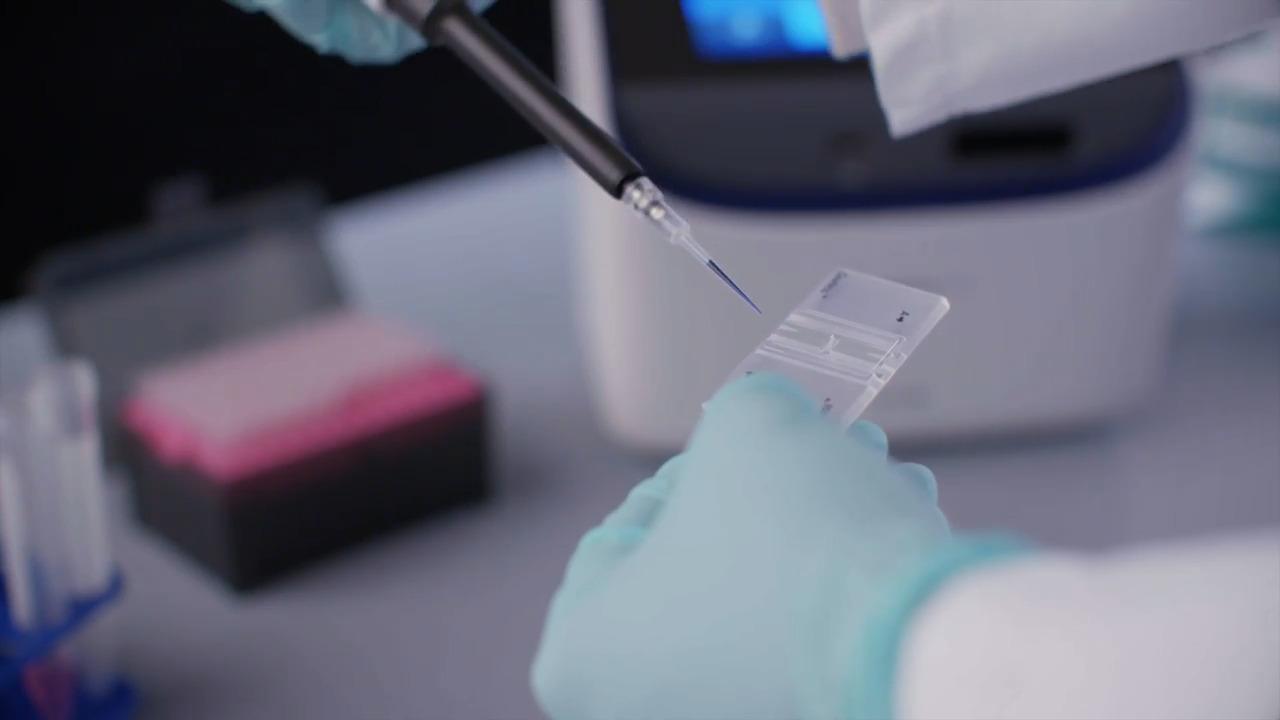Search Thermo Fisher Scientific
.png)
Cell counting accessories: slides, electronic records, light cubes, fluorescent stains
Explore our comprehensive collection of accessories designed to complement and enhance the performance of automated cell counters. We understand the critical importance of accurate and efficient cell counting, that’s why we offer a diverse range of accessories crafted to meet the varying needs of researchers. From calibration kits designed for precise counting accuracy to reagent kits facilitating accurate viability assessments, our selection encompasses what you need to optimize your cell counting workflow.
Slides and slide holders
With both the Countess 3 and Countess 3 FL Automated Cell Counters, you can choose between convenient disposable slides and economical, environmentally-friendly reusable slides. Both are designed specifically for use with Countess cell counters.
Each slide has two chambers to count one sample in duplicate or two different samples. Only 10 µL of sample mixed with 10 µL of trypan blue is needed for a brightfield count. Cells are counted in a central location of the counting chamber. The sample volume counted is 0.4 µL, equivalent to four 1-mm² squares in a standard hemocytometer.
Disposable Countess Cell Counting Chamber Slides are convenient for quickly processing cell samples when there are many to process, when the cell culture facility is busy, or to simplify the disposal of contaminated or hazardous samples. Disposable slides also eliminate the risk of contamination from residual samples and the frustration of finding an unclean shared hemocytometer. Unlike a hemocytometer, there is no need to clean Chamber slides before or after use.
The Countess Reusable Slide is a green, cost-efficient alternative to disposable slides. Even if your lab uses only a few slides per day, you can reduce cost and generate less waste per year with the reusable slide. This innovation makes it affordable for labs to automate their cell counts. The reusable slide should be cleaned and dried between counts, just as with a hemocytometer.
The Chamber slide and Reusable slide have different slide holders. When using the Chamber slides, the holder can remain in the counter so that you can easily insert each slide directly into it. The reusable slide is inserted into the slide holder first, then the combination of slide and holder are inserted into the Countess 3 or 3 FL Automated Cell Counter.
Ordering information
Countess 3 Standard Slide
Use the Countess 3 Standard Slide as a functional reference for viability and cell counts. This ready-to-use slide contains between 0.5 and 1.5 x 10⁶/mL permanently mounted 15 µm microspheres in a cell counting chamber. When viewed in brightfield on the Countess 3 or FL Automated Cell Counter, the microspheres mimic the appearance of a 1:1 mixture of live and dead cells stained with trypan blue solution.
When viewed on the Countess 3 FL Automated Cell Counter, the microspheres also are fluorescent in a 1:1 mixture, providing approximately 50% detection with a DAPI or GFP light cube and approximately 50% detection with an RFP, Texas Red, or Cy5 light cube. The 50% fluorescence populations are shown in both single- and dual-channel fluorescence counting.
The permanently mounted microspheres on the Countess 3 Standard Slide will have minimal variability from one count to the next. You can use the slide as a functional reference for cell counts and viability across days or between Countess 3 instruments. The slide is ready to use and reusable.
Ordering information
21 CFR Part 11 compliance support software
The Countess SAE Software Solution is an optional software module that supports electronic record-keeping that is compliant with the US Food and Drug Administration’s Electronic Records and Signatures Rule (21 CFR Part 11). Capabilities of the software include restriction of unauthorized users, password policies and expiration dates, defined user permissions and roles, tracking of all data changes through an audit log, audit reports, and on-board e-signature workflows. All Countess 3 and Countess 3 FL Automated Cell Counters can run in SAE Mode after purchase of the Countess SAE Software License.
For more information about the Countess SAE Software Solution, see Features.
Ordering information
To use the Countess SAE Software Solution with your Countess 3 Automated Cell Counter, a software license can be purchased independently or as part of a bundled Countess 3 FL instrument and software license package.
Additional accessories for fluorescence cell counting applications
Beyond simple cell counting, the Countess 3 FL Automated Cell Counter’s fluorescence capabilities are utlizied for assessing cell viability, apoptosis, transfection effienciey and fluorecent protein expression.
For Research Use Only. Not for use in diagnostic procedures.
